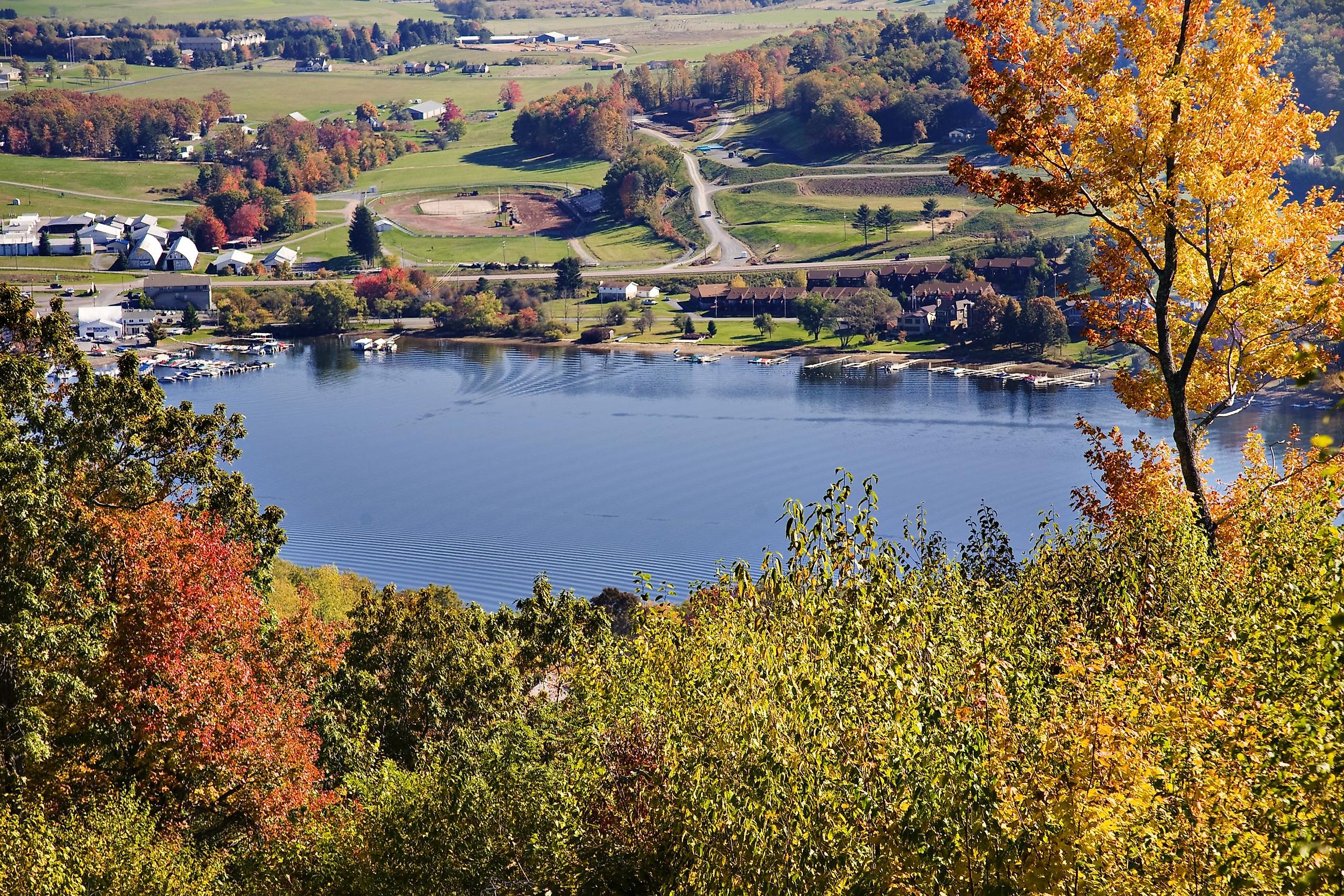
7 Most Beautiful Lakes in Maryland
As is the case all over the world, the lakes of Maryland are a popular destination for locals and tourists looking to relax. They are a focal point for outdoor recreation, fishing, and enjoyment of the natural world. Unlike many places, though, not a single one of the lakes in Maryland was formed naturally. Most natural lakes are formed by glaciers, but during the last Ice Age, glaciers didn’t reach the area that is now Maryland. Other lakes are caused by faulting, volcanic activity, or landslides, which again didn’t happen in that area.
There are now over 100 artificial lakes in Maryland, and though they were the result of human development, especially due to the need for hydroelectric energy, nature has made good use of them. Some of the most beautiful of these lakes have become an important part of the area’s ecosystem and are now part of larger parks. The land, plants, and animals have adapted to the lake’s presence, so these parks have become important habitats for fish, birds, and animals large and small.
Deep Creek Lake
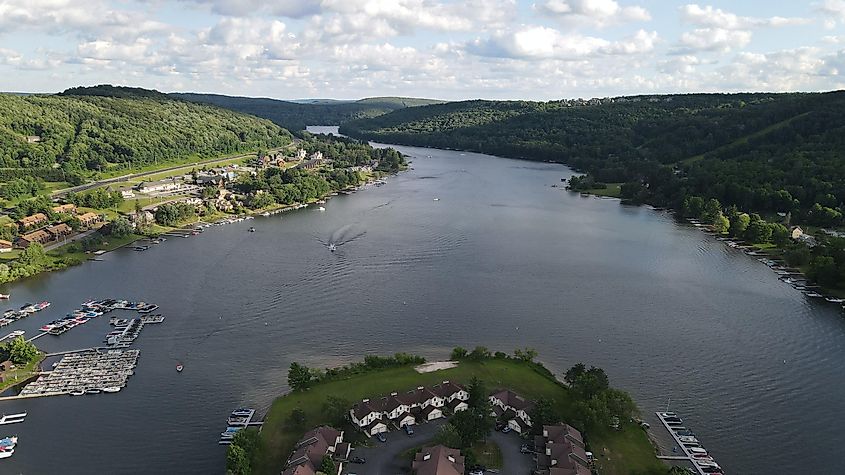
As the largest lake in the state, Deep Creek Lake is also perhaps the most well-known of Maryland’s lakes. It can be found near Oakland, in Deep Creek Lake State Park, which sits high on a plateau in the Allegheny Highlands. Created as the result of a hydroelectric dam, it has been an important source of energy for the area since 1925.
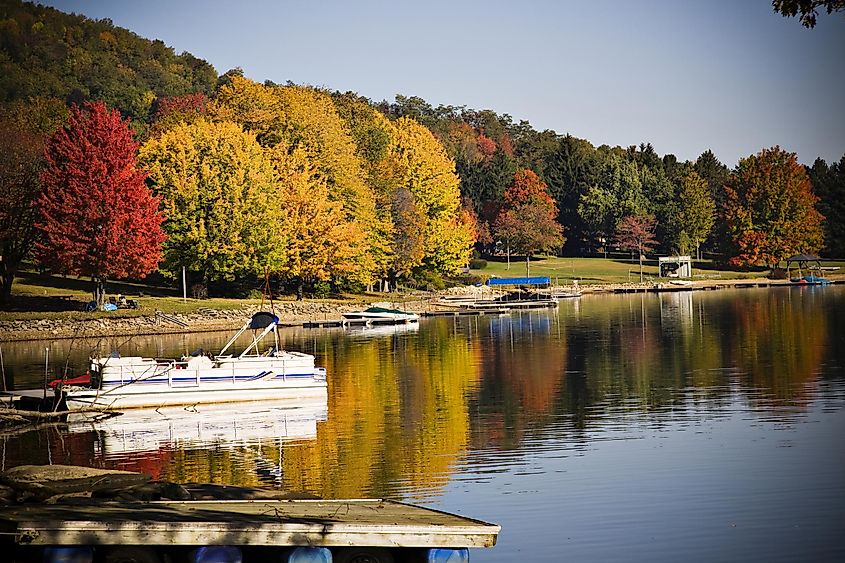
The lake itself covers approximately 3,900 acres and is surrounded by 69 miles of shoreline, some of which is sandy beach. The lake is a popular spot for fishing and boating of all types. Nearby, the state park offers cabins, camping spots, and over 100 miles of trails from which to try to spot elk or mule deer. But the park is also home to bobcats and black bears, so caution to all hikers is recommended. Also in the park is a 6,000 s6,000-square-foot Discovery Center with an aviary that features rescued eagles and ospreys.
Greenbrier Lake
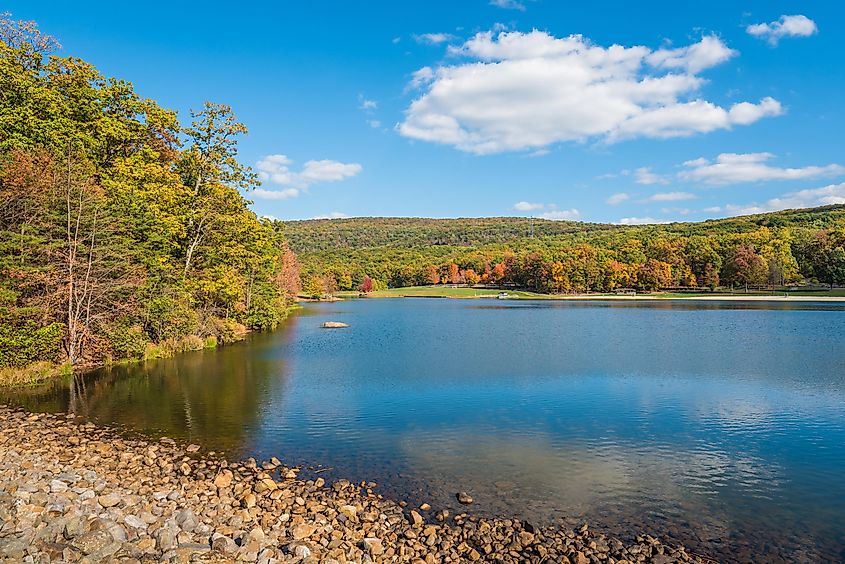
In the town of Boonsboro in the Appalachian Mountains is the 42-acre Greenbrier Lake. It is one of Maryland’s most popular swimming lakes because, unless it has just stormed, the water is exceptionally clear. It is so popular that there is often a line of cars just to get access to the park. Some of the white sand beaches are even wheelchair accessible, as are some of the campsites, the picnic spots, and the Visitor’s Center.
The area around it, Greenbrier Lake State Park, contains multiple different habitats, which can be experienced from about eleven miles of trails. These trails are rocky and more suitable to experienced hikers with the proper gear and include a portion of the famous Appalachian Trail as well.
Hunting Creek Lake
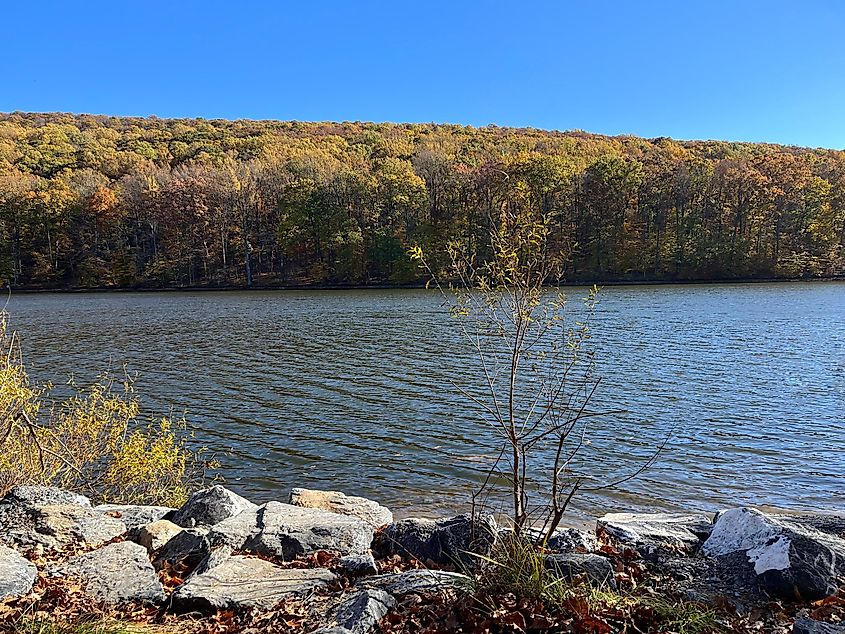
Another great swimming lake with a sandy beach is Hunting Creek Lake at Cunningham Falls State Park in the Catoctin Mountains. Lifeguards are on duty most days during the swimming season. With a concrete boat ramp, accessible pier, and onsite boat rentals for those who don’t have their own, it is also a very popular lake for canoeing, kayaking, and fishing for trout, bass, and bluegill.
Found just outside the town of Thurmont, the park is also home to the state’s tallest cascading waterfall a short hike away from the lake. There are two ways to get to the falls, including one that is accessible by wheelchair. There is a mixture of electric and non-electric campsites as well as several cabins to rent. These are in high demand and so are often reserved months in advance.
Lake Artemesia
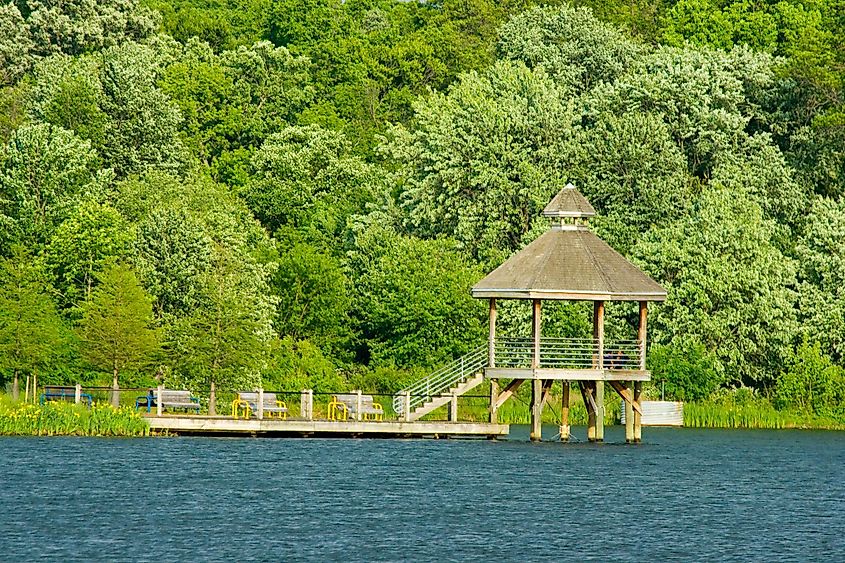
In the Washington D.C. suburban area is a 38-acre man-made lake called Lake Artemisia, after the woman who donated the land for it and its surrounding park. The land was excavated for sand and gravel to use in the construction of the Washington Metro Green Line in exchange for it being turned into a recreation area.
Several restrictions are in place. Swimming and boating are prohibited on the lake and motorized vehicles are not allowed in the park, so the main draws are fishing from the pier and birdwatching. The pier, trail around the lake, and trails into and out of the park are all wheelchair accessible. The rest of the natural area around the park includes aquatic habitats and a small meadow, which combined with the lake attracts a large variety of bird species. The Prince George's Audubon Society hosts walks twice a month and bird spotters can expect to see long-tailed ducks, common goldeneyes, ibises, warblers, vireos, Baltimore orioles, and orchard orioles.
Lake Waterford
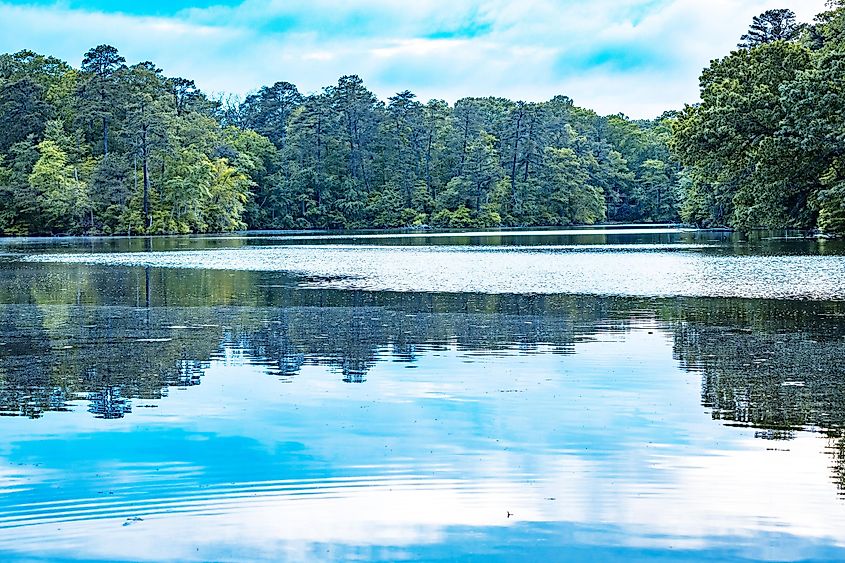
Just outside of Baltimore, Maryland is the 12-acre Lake Waterford, popular for its views, shoreline fishing, and water bird spotting. The lake and its regional park date back to 1966, but the use of the land dates back much further and they are one of the oldest landmarks in the area. During renovations in the 1990s, excavations uncovered nails and stones from the foundation of an old mill dating back to the 1600s.
Access to the 108-acre park is free to all and offers a variety of activities besides those centered around the lake. There are both paved and unpaved trails for walking, hiking, and biking. There are courts for tennis, pickleball, and basketball, a baseball field, and rentable pavilions for events. For families, the most popular area is the playground, which features multiple slides, swings, tunnels, and bridges.
Prettyboy Reservoir
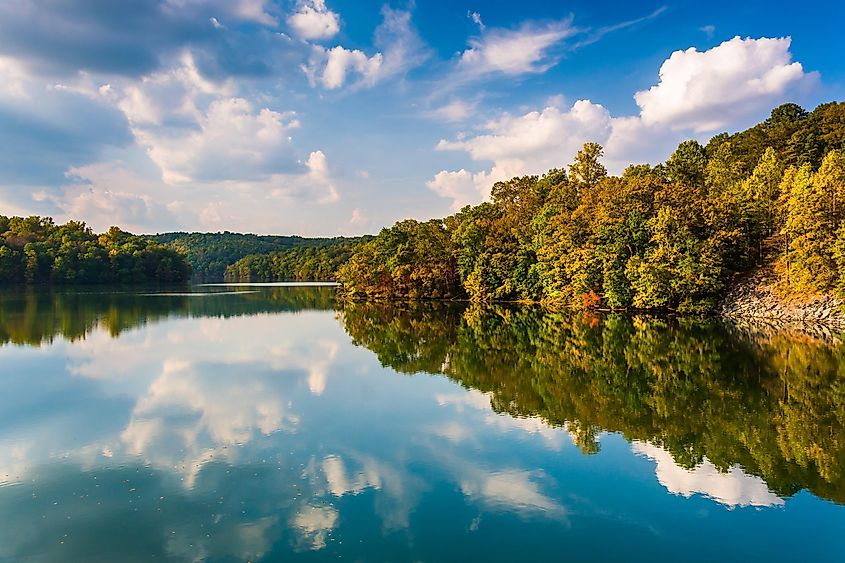
One of Baltimore’s major water suppliers is the Prettyboy Reservoir, which sits in the 51-thousand-acre Prettyboy Reservoir Cooperative Wildlife Management Area. The reservoir is the largest lake in Maryland, though it isn’t a round shape but rather spreads out in many different directions.
Though it is owned and managed by the City of Baltimore, it is quite secluded. Visitors to the lake can explore all the arms of the lake by kayak, canoe, or electric boat, though gas motors are prohibited. Fishermen come out on weekends for the array of cold and warm species they can catch. The deepest points of the lake are about 128 feet and so are home to some trophy-sized bass, as well as bluegill and channel catfish. The park is also a haven for birds and bird watchers stay on the lookout for bald eagles, barred owls, and red-shouldered hawks.
Tuckahoe Lake
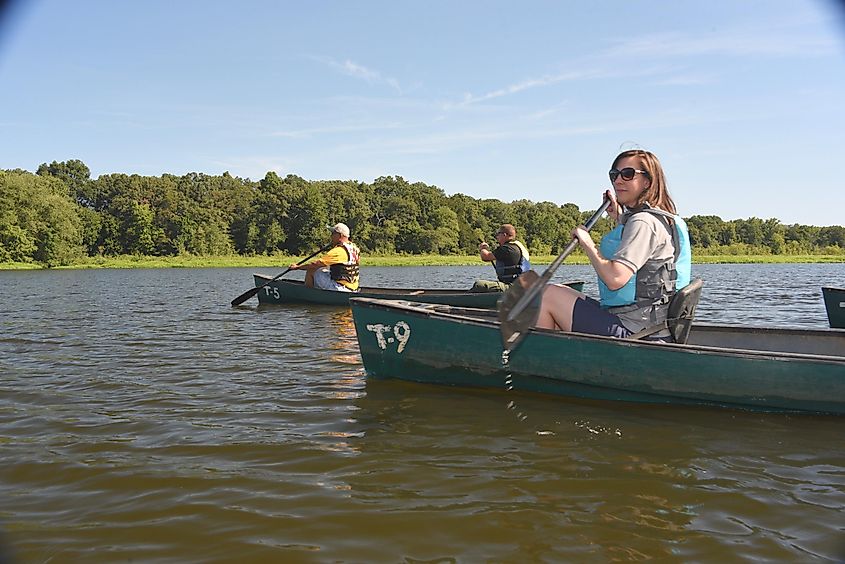
Near Queen Anne, Maryland is one of the more unique bodies of water in the state: Tuckahoe Lake. Only about 20 acres are open water, while the majority of it, 40 acres or so, is flooded woodland. Boaters can paddle through the channels in these quiet marshy areas to fish among the roots and stumps for chain pickerel, bass, and bluegill. They can also expect to find some beautiful secluded spots and get up close to the turtles, beavers, and muskrats that call the lake home. Those without boats of their own can choose from different options for a daily fee from spring to fall.
Neither camping, gas motors, nor swimming is allowed, but the park has a playground, hosts many activities for families and kids, and includes 20 miles of trails for spotting wildlife like great blue herons.
The lakes of Maryland play an important role in the lives of the people who live and visit. But they are also crucial to the wildlife that has developed around them, wherever the land has been set aside so that it is able to. Though many lakes offer the same opportunities for fishing and swimming, others have restrictions to help preserve them or the surrounding park. That means that every lake is also unique. Some are deep and some are shallow. Some allow swimming, but some do not. Some allow certain kinds of boats but not others. What they all have in common, though, is the beauty that is so often created when a nature-filled landscape and large expanses of water are allowed to meet.











